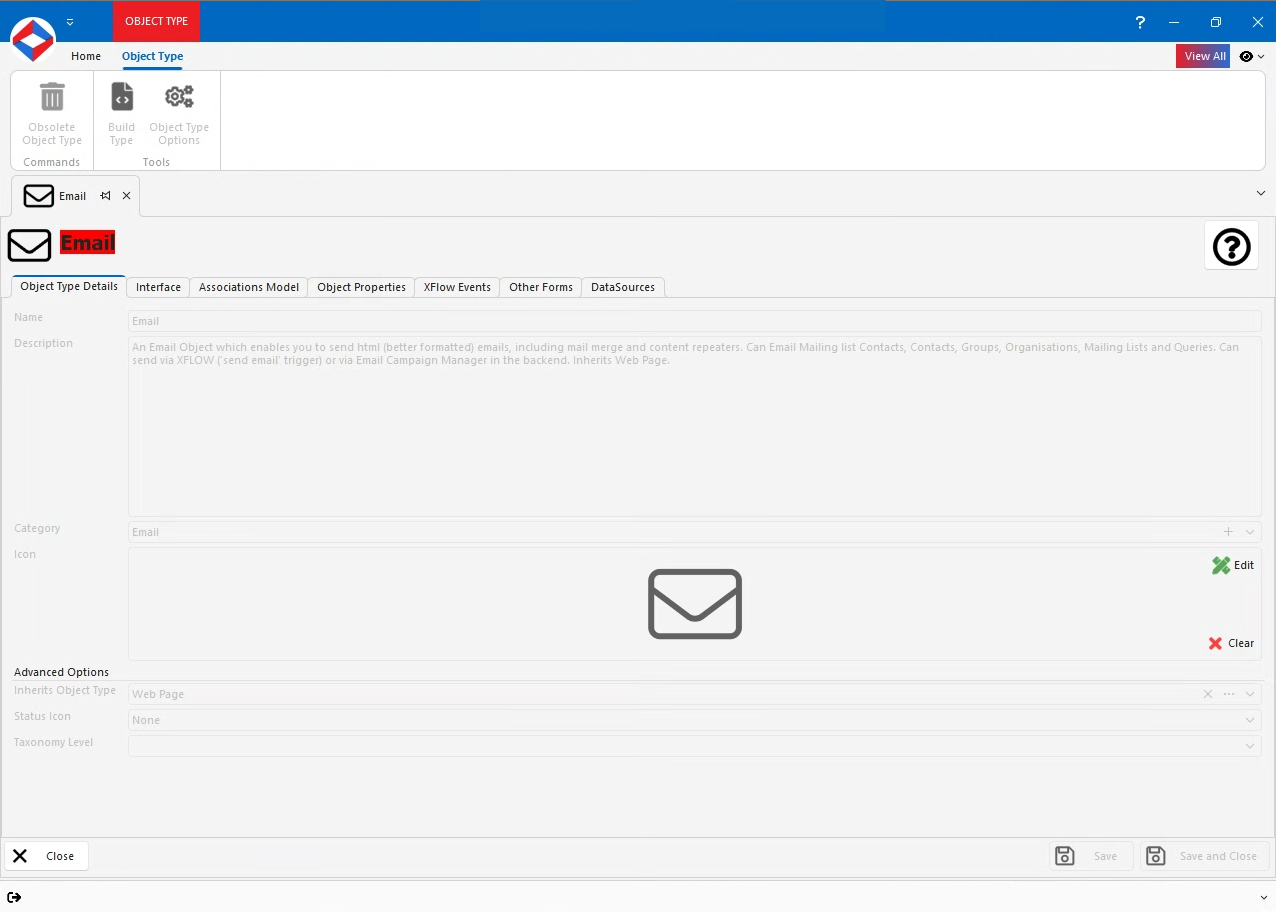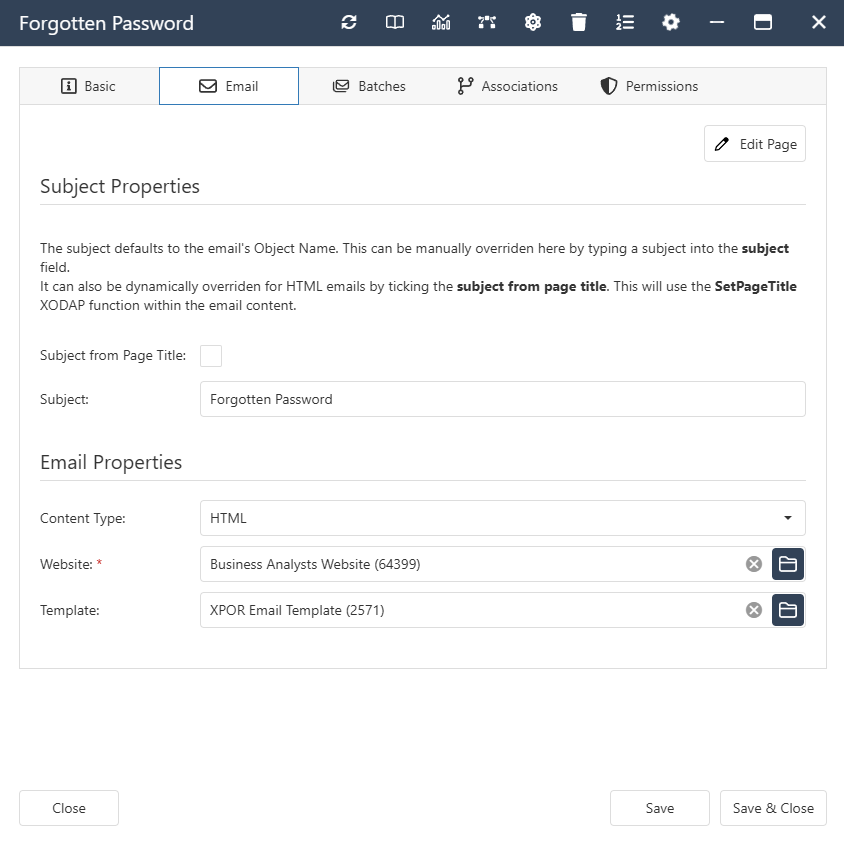Help Resources
Email Overview
The Email Object is how an email can be made in XPOR and can then be sent to as many people as you like and stored afterwards.
Email Properties
- Subject - Text Property.
- SubjectFromTitle - Boolean Property. If this box is checked then the email's subject will be set as the name of the email. You can use the "Set Page Title" function in the content of the email to set a merged subject from a passed in Object.
- Priority - Constant Set Property.
- Normal
- Low
- High
- Format - Constant Set Property.
- Plain Text
- HTML
- Simple HTML
- Content - Text Property.
- HtmlContent - Text Property.
- ManualWebSite - Website Object Property.
Click here to view the Properties inherited from Webpage
Email Interface
Email Associations
- System -
- Contained By. Allowed Types - Calendar, Order Type, Forums Board, Marketing Campaign Email.
- Contains. Allowed Types - Image, Website, Webpage.
- Email -
- Emails Website. Allowed Types - Website.
- Password email for Group. Allowed Types - Group.
Click here to view the Associations inherited from Webpage


